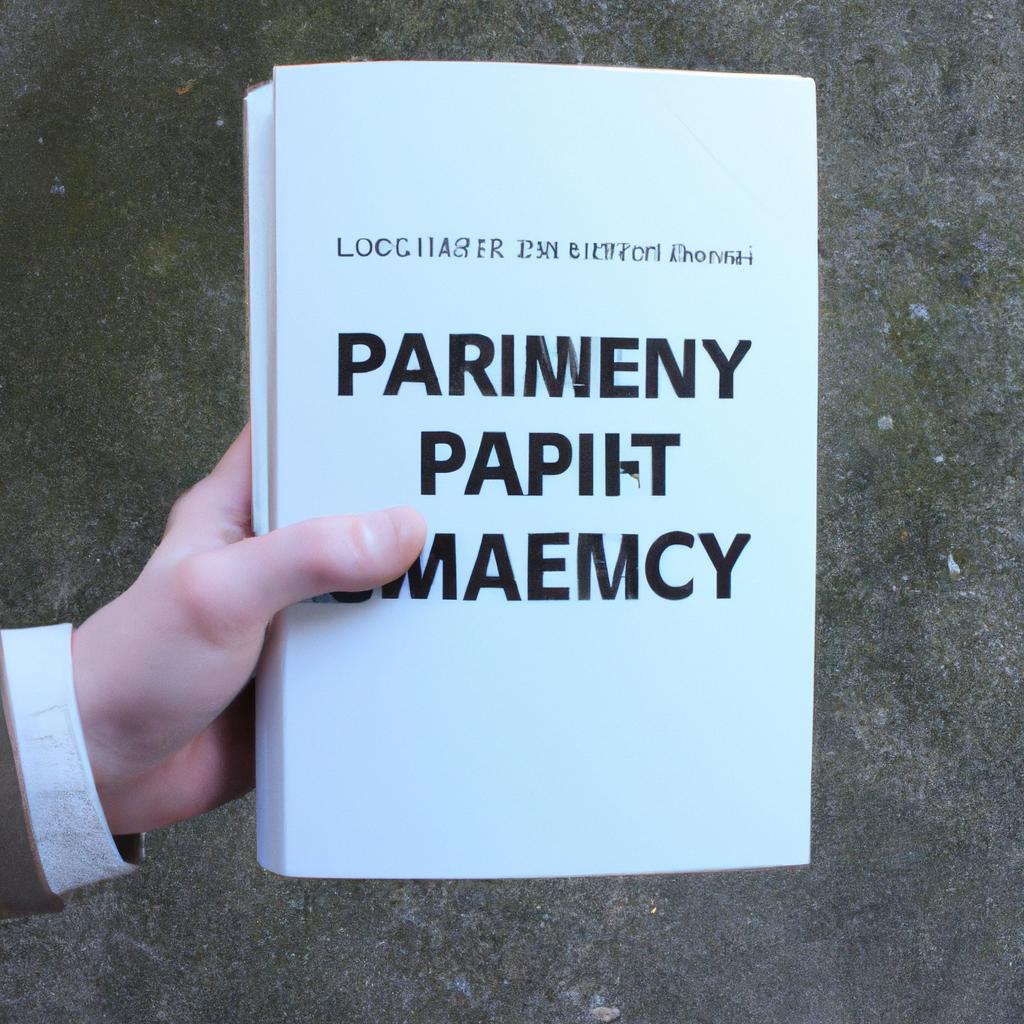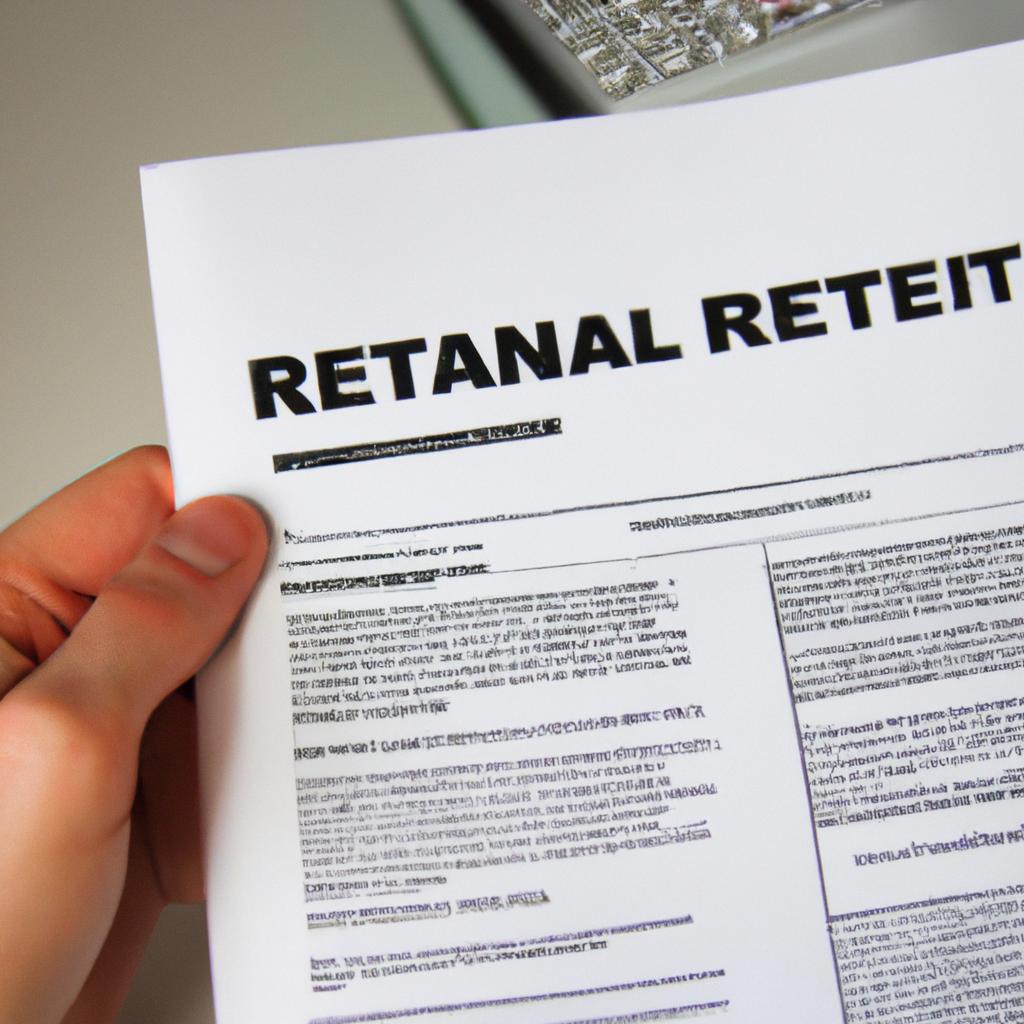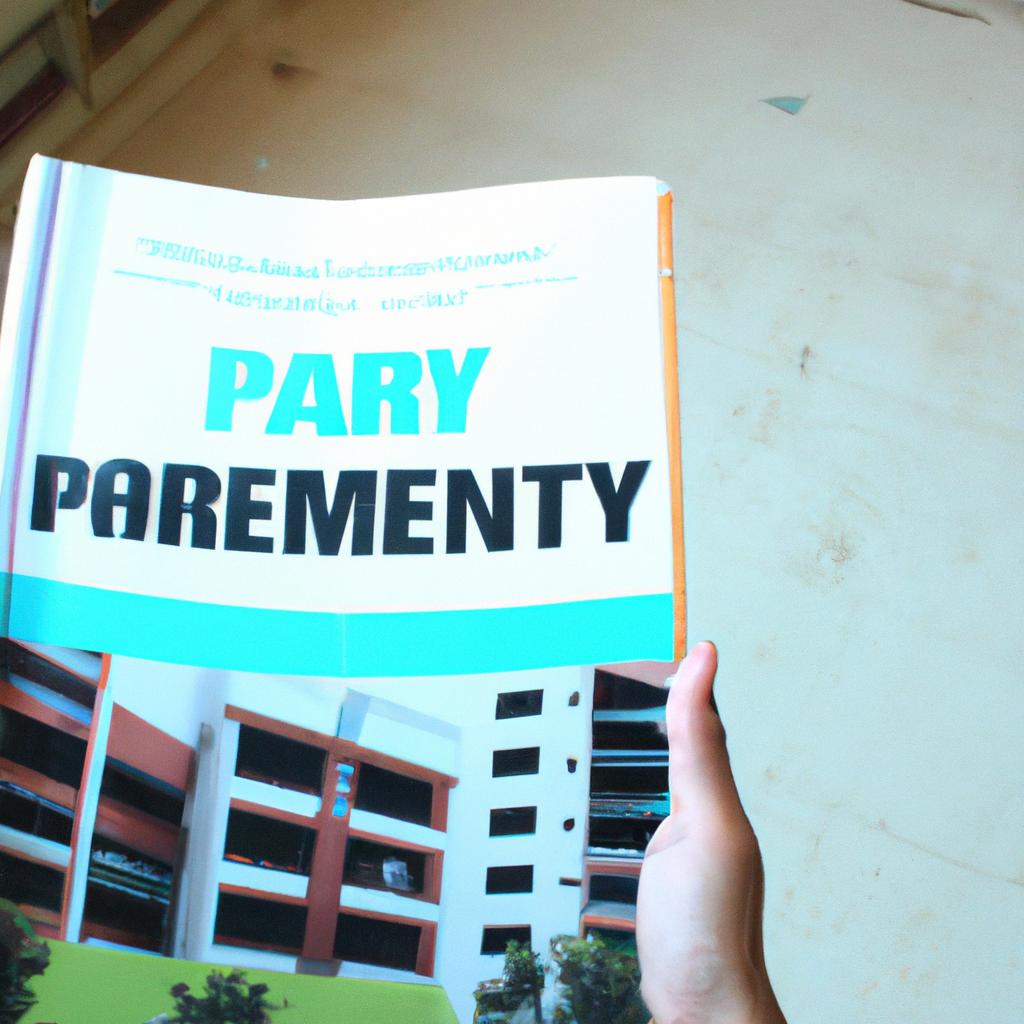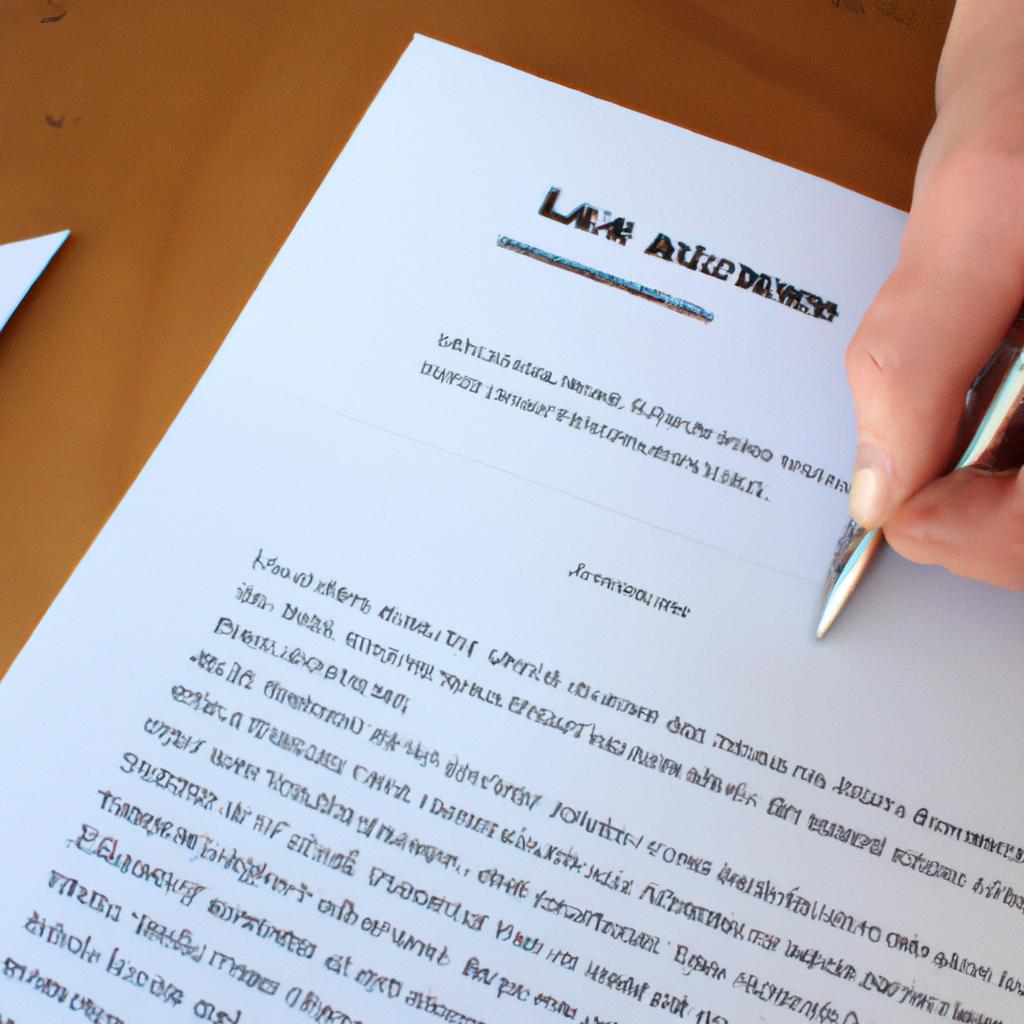The efficient management of maintenance requests in villas and apartments is crucial for ensuring the smooth functioning and upkeep of properties. Property owners and managers are constantly faced with the challenge of addressing numerous maintenance issues, ranging from minor repairs to major renovations. For instance, consider a hypothetical scenario where a leaky faucet goes unaddressed in an apartment building. If left unresolved, this seemingly insignificant issue can lead to water damage, increased utility bills, and tenant dissatisfaction. Therefore, it becomes imperative to streamline property management processes by implementing effective systems for handling maintenance requests.
In recent years, advancements in technology have provided property managers with various tools to enhance their ability to manage maintenance requests efficiently. The adoption of online portals or mobile applications has revolutionized communication between tenants and property management teams, allowing for seamless submission and tracking of maintenance requests. Additionally, these platforms often provide features such as automated notifications and real-time updates on the status of each request. By embracing these technological developments, property managers can not only improve response times but also ensure transparency throughout the entire process.
Despite the availability of such resources, there are still challenges that need to be addressed when streamlining property management procedures related to maintenance requests. These include prioritizing urgent issues based on severity, allocating appropriate resources for timely resolutions and effectively coordinating with maintenance staff or external contractors.
One of the key challenges is prioritizing maintenance requests based on their severity. Property managers need to establish a clear system for categorizing requests and determining which ones require immediate attention. This can be achieved by assessing the potential impact on tenant safety, property damage, or disruption to daily operations. By assigning priority levels to each request, property managers can ensure that urgent issues are promptly addressed while also managing resources efficiently.
Allocating appropriate resources is another crucial aspect of efficient maintenance management. Property managers must have a well-defined process for assigning tasks to maintenance staff or external contractors based on their expertise and availability. This involves maintaining an up-to-date database of skilled professionals who can handle different types of repairs and renovations. By matching the right personnel to specific requests, property managers can minimize delays and ensure that repairs are carried out effectively.
Effective coordination between property managers, tenants, and maintenance staff is vital for streamlining the management of maintenance requests. Clear communication channels should be established to keep all parties informed about the progress of each request. Implementing automated notifications and real-time updates through online portals or mobile applications can help facilitate this communication. Regular follow-ups with both tenants and maintenance staff can also help maintain accountability and ensure timely resolutions.
In conclusion, implementing effective systems for handling maintenance requests is essential for efficient property management in villas and apartments. Advancements in technology have provided valuable tools for streamlining these processes, such as online portals or mobile applications. However, challenges like prioritization of urgent issues, resource allocation, and coordination remain important considerations. By addressing these challenges proactively, property owners and managers can enhance resident satisfaction and ensure the smooth functioning of their properties.
Challenges in handling maintenance requests
Managing maintenance requests in villas and apartments poses several challenges for property management teams. These challenges can lead to delays, inefficiencies, and frustrated residents. To better understand these difficulties, let us consider an example: a resident living in an apartment complex notices a leaky faucet in their bathroom. They submit a maintenance request through the designated system but receive no response for days.
One of the main challenges is the sheer volume of maintenance requests that property management teams need to handle on a daily basis. With numerous tenants residing in one building or community, it becomes increasingly difficult to prioritize and address each request promptly. This backlog often leads to increased waiting times for residents, causing inconvenience and dissatisfaction.
Additionally, communication breakdowns between residents and property management further compound the problem. Residents may struggle to effectively communicate their issues or provide detailed information about the requested repairs. On the other hand, property managers may face difficulty reaching out to residents for additional details or updates regarding ongoing repairs.
To convey the magnitude of these challenges more vividly:
- Imagine multiple tenants experiencing urgent maintenance issues simultaneously.
- Picture frustrated residents facing prolonged waiting times with no visibility into progress.
- Consider instances where poor communication results in misunderstandings or incomplete repair work.
- Reflect on situations where unresolved maintenance problems escalate into larger issues affecting multiple units.
To illustrate this visually, we present the following table showcasing common challenges faced by property management teams when dealing with maintenance requests:
| Challenges | Impact |
|---|---|
| High volume of requests | Increased waiting times |
| Communication breakdowns | Misunderstandings and delays |
| Inadequate information from residents | Incomplete or incorrect repairs |
| Escalation of minor issues | Larger-scale problems |
In light of these challenges, streamlining maintenance requests becomes imperative not only for efficient operations but also for maintaining tenant satisfaction and overall property value. In the subsequent section, we will explore the benefits of implementing a streamlined approach to handling maintenance requests and how it can address these challenges effectively.
Benefits of streamlining maintenance requests
Challenges in handling maintenance requests can often be a significant burden for property managers, leading to delays and inefficiencies. However, by streamlining the process, these challenges can be overcome, resulting in improved property management. For instance, let’s consider an example of a residential community that consists of several villas and apartments. In this scenario, residents frequently face issues such as faulty plumbing systems or malfunctioning electrical equipment. Without efficient mechanisms in place to handle maintenance requests, addressing these issues promptly becomes increasingly challenging.
To streamline the maintenance request process, there are several key considerations that property managers should bear in mind:
- Centralized Request Management: Establishing a centralized system where residents can submit their maintenance requests is crucial. This allows for better organization and tracking of incoming requests, ensuring no issue goes unnoticed or unattended for extended periods.
- Prioritization and Categorization: Implementing a method to prioritize and categorize maintenance tasks helps ensure urgent matters receive immediate attention while non-urgent ones are appropriately scheduled within reasonable timelines.
- Automated Notifications: Employing automated notifications not only keeps residents informed about the progress of their maintenance requests but also reduces unnecessary follow-ups with property management staff.
- Efficient Allocation of Resources: By centralizing information on pending and completed maintenance tasks, property managers gain insights into resource allocation needs more effectively, enabling them to allocate resources efficiently based on demand.
These strategies help alleviate some common challenges associated with handling maintenance requests effectively. To illustrate the impact of implementing streamlined processes further, consider the following table showcasing potential improvements:
| Challenge | Before Streamlining | After Streamlining |
|---|---|---|
| Delayed Response | High | Low |
| Unattended Requests | Medium | Low |
| Miscommunication | Moderate | Rare |
| Resource Allocation | Suboptimal | Optimal |
By adopting streamlined practices, property managers can significantly enhance their ability to address maintenance requests promptly and efficiently. This not only increases resident satisfaction but also improves the overall quality of living in villas and apartments.
In the subsequent section, we will explore effective communication channels for residents, providing insights into how property management can ensure transparent and accessible lines of communication within residential communities.
Effective communication channels for residents
Benefits of streamlining maintenance requests have highlighted the advantages of efficiently managing and addressing property-related concerns. Now, let us delve into effective communication channels that can be utilized to ensure seamless interaction between residents and property management.
To illustrate the significance of these channels, consider a hypothetical scenario where an apartment complex experiences a water leak in one of its units. Without proper communication channels in place, it may take longer for the resident to report the issue, resulting in further damage and inconvenience. However, by implementing efficient communication methods, such as dedicated phone lines or online portals, residents can easily notify property management about maintenance needs, enabling prompt action to address the situation.
One way to enhance engagement and encourage proactive reporting is through utilizing emotional appeals. By creating a sense of urgency and empathy towards residents’ concerns, they are more likely to use designated platforms for submitting their maintenance requests promptly. Here are some key emotional responses that can be evoked:
- Peace of mind: Knowing that their issues will be addressed quickly improves residents’ overall satisfaction with their living environment.
- Trust: Effective communication fosters trust between residents and property management, ensuring transparency in resolving maintenance concerns.
- Convenience: Simplifying the request submission process saves time for both residents and property managers.
- Safety: Promptly addressing safety-related matters ensures a secure living environment for all occupants.
To highlight different modes of communication available for submitting maintenance requests, we present a table outlining three common options:
| Communication Channel | Description | Advantages |
|---|---|---|
| Dedicated Phone Line | Residents call a specific number provided | – Instant connection |
| Online Portal | Web-based platform accessible anytime | – Convenient access |
| Mobile Application | Smartphone app tailored for maintenance | – Easy-to-use interface |
In conclusion, establishing effective communication channels plays a vital role in promoting smooth interactions between residents and property management teams. By incorporating emotional appeals and providing residents with various means to report maintenance needs, property managers can ensure timely resolution of concerns.
[Transition sentence into subsequent section about “Automating maintenance request processes”] By embracing technology-driven solutions, property management professionals can optimize their approach to handling maintenance requests.Automating maintenance request processes
Streamlining the process of managing maintenance requests in villas and apartments is crucial for ensuring efficient property management. In this section, we will explore the benefits of automating maintenance request processes to enhance overall effectiveness.
To illustrate the advantages of automation, let’s consider a hypothetical scenario: Imagine a large apartment complex with hundreds of units. Previously, residents would have to submit their maintenance requests through various channels such as phone calls or emails, leading to potential delays and confusion. However, by implementing an automated system, residents can now conveniently submit their requests through an online portal accessible 24/7. This streamlined approach not only improves communication but also enables property managers to respond promptly to urgent issues.
The introduction of automation brings numerous benefits that positively impact both residents and property managers alike:
- Enhanced efficiency: By digitizing the maintenance request process, information can be captured seamlessly and accurately. This eliminates errors caused by manual data entry and ensures prompt response times.
- Improved transparency: An automated system allows residents to track the progress of their requests easily. They can receive regular updates on when repairs will occur, giving them peace of mind and minimizing frustration.
- Cost savings: Automating maintenance request processes reduces administrative workloads for property managers. As a result, they can allocate resources more effectively and potentially reduce labor costs.
- Increased resident satisfaction: With quicker response times and improved communication channels, residents feel valued and supported. This fosters a positive relationship between residents and property management.
| Key Benefits | Description |
|---|---|
| Efficiency | Digitizing the process streamlines operations, improving response time |
| Transparency | Residents can track progress effortlessly |
| Cost savings | Reduced administrative workload may lead to reduced labor costs |
| Resident satisfaction | Quicker responses and better communication foster positive relationships |
Automating maintenance request processes revolutionizes how properties are managed by prioritizing efficiency, transparency, cost savings, and resident satisfaction.
Assigning and tracking maintenance tasks
Building upon the benefits of automating maintenance request processes, let us now explore the efficient assignment and tracking of maintenance tasks. By streamlining these aspects, property management can ensure timely response and resolution to issues that arise within villas and apartments.
Assigning and Tracking Maintenance Tasks
To illustrate the effectiveness of streamlined task assignment and tracking, consider a hypothetical scenario in which a tenant reports a leaking faucet in their apartment. With an automated system in place, the property manager receives the request instantly, triggering an automatic assignment of the task to a qualified maintenance staff member based on predefined criteria such as expertise or workload balance. This not only eliminates delays caused by manual delegation but also ensures that every complaint is promptly attended to without any oversight.
The integration of comprehensive task tracking mechanisms further enhances efficiency. Through real-time updates provided by both tenants and maintenance personnel, property managers gain visibility into each stage of task completion – from acknowledgement to resolution. This transparency enables them to closely monitor progress, identify bottlenecks if any, and take appropriate measures for swift remediation when necessary.
As we delve deeper into understanding how streamlining property management improves overall satisfaction levels among residents, it is worth highlighting some key advantages:
- Enhanced responsiveness: Automated systems enable quick identification and allocation of resources for addressing maintenance requests.
- Improved accountability: The ability to track tasks facilitates greater accountability among maintenance staff members as their performance becomes more visible.
- Increased tenant satisfaction: Timely response coupled with effective communication regarding task status fosters trust between tenants and property management.
- Efficient resource utilization: Task tracking allows property managers to optimize resource allocation by identifying patterns or recurring issues that require preventive action.
| Advantages |
|---|
| Enhanced responsiveness |
| Improved accountability |
| Increased tenant satisfaction |
| Efficient resource utilization |
By implementing efficient assignment and tracking methods for maintenance tasks, property managers can effectively streamline their operations while enhancing resident experience. In our subsequent section about the importance of timely response and resolution, we will delve into the impact this has on overall satisfaction levels within villas and apartments.
Importance of timely response and resolution
Once maintenance tasks have been assigned, it is crucial for property management to ensure a prompt response and efficient resolution. Failure to address maintenance requests in a timely manner can lead to tenant dissatisfaction and potential damage to the property. By prioritizing quick response times and effective problem-solving, property managers can maintain a high standard of quality living for residents.
Example Case Study:
To illustrate the significance of timely response and resolution, consider an apartment complex where one resident reports a leaking faucet that needs immediate attention. If the property manager fails to promptly assign the task or delays its completion, not only does this inconvenience the affected resident but it also increases the likelihood of further water damage within their unit. This case study demonstrates how swift action is essential in preventing minor issues from escalating into more significant problems.
Importance of Timely Response and Resolution:
Responding promptly to maintenance requests has several benefits for both tenants and property management. These include:
- Tenant satisfaction: When repair issues are addressed quickly, tenants feel valued and appreciated. It enhances their overall experience with the property management team.
- Preventing further damage: Timely responses help prevent small problems from turning into larger ones that may require costlier repairs or replacements.
- Retaining tenants: Providing efficient solutions to maintenance concerns fosters trust between tenants and property management, increasing tenant retention rates.
- Reputation management: Promptly resolving maintenance issues contributes positively to the reputation of the property management company among current and prospective tenants.
Emotional Impact on Tenants
| Emotion | Scenario |
|---|---|
| Relief | A broken air conditioner gets repaired immediately during scorching summer temperatures. |
| Frustration | A leaky pipe continues to drip for days before being addressed, causing inconvenience and potential damage. |
| Gratitude | A clogged drain is promptly cleared by maintenance staff, preventing further issues in the tenant’s unit. |
| Disappointment | Maintenance requests go unanswered or unresolved over an extended period of time, leading to dissatisfaction among tenants. |
In conclusion,
Addressing maintenance requests in a timely manner is crucial for effective property management. By providing quick responses and efficient resolutions, property managers can foster tenant satisfaction, prevent further damage, retain tenants, and maintain a positive reputation within the community. Through prioritizing prompt action on maintenance tasks, property managers contribute to creating a pleasant living environment that meets the needs and expectations of residents.
 Villas In Florence
Villas In Florence



